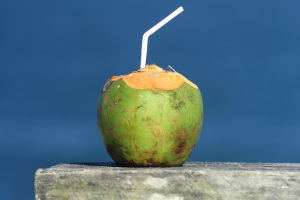In the late 1980s, Anderson's team made a groundbreaking discovery on the forest floor of Crystal Falls: a rich community of Armillaria gallica, also known as the honey mushroom.
Initially, the team thought they had stumbled upon an ordinary mushroom community.
However, they soon realized that they were looking at a single, colossal fungus. The team estimated that this fungus covered at least 91 acres, weighed around 100 tons, and had been growing for at least 1,500 years. This discovery shattered the previous world record held by an Armillaria ostoyae in Oregon for the largest fungus.
Anderson mentioned that the discovery caused a significant sensation at the time, especially since it was announced on April Fools' Day, leading many to believe it was a joke. In 2015, Anderson's team decided to revisit Crystal Falls to verify their initial findings.
From 2015 to 2017, they collected samples and used advanced genetic sequencing technology at the University of Toronto's laboratory to analyze the DNA. Over the past few decades, genetic analysis technology has advanced significantly, making the analysis process more convenient, faster, and more accurate.
Upon analyzing the latest samples, the team confirmed that this Armillaria gallica was indeed a single organism, and its size and age far exceeded their previous estimates.
The new data revealed that the fungus was four times larger than initially estimated and had been growing for 1,000 years longer than originally predicted. This means the fungus could weigh approximately 400 tons.
The research team also discovered that substances within this Armillaria gallica might have the potential to combat cancer, one of modern medicine's most challenging adversaries.
The fungus's ability to survive for such an extended period and grow to such a large size is attributed to its extremely low mutation rate. This means that its genetic code rarely changes. Normally, in living organisms, cells divide, and new cells may mutate during gene replication, resulting in changes in the genetic code.
This mutation process is generally believed to be one of the causes of aging. However, Armillaria gallica appears to possess an internal mechanism that resists DNA damage, maintaining the stability of its genome.
Anderson's team collected 15 samples from various parts of the forest for sequencing and found that there were very few mutations in the genetic code. Only 163 out of 100 million genetic codes had changed.
Anderson believes that this exceptionally low mutation rate indicates that Armillaria gallica has a mechanism to resist DNA damage. Although the specific reasons remain unclear, this remarkable stability offers a new perspective for human health research.
In some cancers, mutations in cells spiral out of control after the normal DNA inspection and repair mechanisms are compromised. Some components of Armillaria gallica seem capable of counteracting this instability.
Anderson explained that by comparing cancer cells and Armillaria gallica cells cultured over the same period, they observed that cancer cells became unrecognizable due to frequent mutations, while Armillaria gallica cells remained relatively stable.
This comparative study helps scientists better understand the mechanisms behind cancer cell mutations and may provide new treatment strategies.
Despite the potential revealed by Anderson's team's research into fungi in the field of anti-cancer, they do not plan to pursue further in-depth research. Instead, they hope that younger and more specialized teams will take up this work.
Fungi are among the most common organisms on Earth, with a total biomass exceeding that of all animals combined. Scientists continue to discover new species of fungi, and it is estimated that there are approximately 3.8 million species globally, with over 90% yet to be discovered. In 2017 alone, scientists identified 2,189 new species of fungi.
A report from London's Royal Botanic Gardens, Kew, highlights that fungi already have hundreds of uses, ranging from making paper to washing clothes.
In the field of vaccines and biologics, about 15% of raw materials come from fungi. For instance, the complex protein in the hepatitis B vaccine is cultured in yeast cells, which are a type of fungus.
The well-known antibiotic penicillin was discovered from household mold, and many antibiotics are derived from fungi. Drugs such as statins used to lower cholesterol and new immunosuppressants for treating multiple sclerosis are also sourced from fungi.
Fungi possess extraordinary potential, not only playing essential roles in ecosystems but also offering revolutionary breakthroughs in medicine and other fields. As scientists continue to explore the magical properties of fungi, more astounding discoveries are likely to emerge, unveiling even more of their hidden powers.


